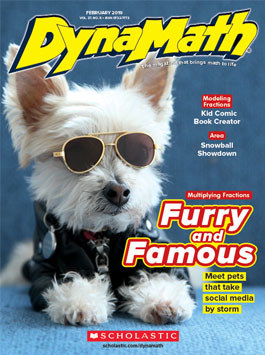I loved what I learned from Meredith Scheiner and Erin Dougherty, math specialists from Pennsylvania. In their session, they explained how teachers can “flip” standardized questions to allow students more opportunities for multiple answers and strategies while still maintaining the skill and cognitive demand. They modeled how to take a closed task—where there is only one answer or one strategy—and flip the task to make it open-ended. Here are some examples.
Closed: The average distance from Earth to the moon is 238,885 miles. What is this distance rounded to the nearest thousand?
Open-ended: The average distance from Earth to the moon is about 240,000 miles. What numbers round to 240,000? How do you know?
Closed: There are 7 math folders on a classroom shelf. This is 1/3 of the total number of math folders in the classroom. What is the total number of math folders in the classroom?
Open-ended: There are 7 math folders on the pile. This is close to 1/3 of the total number of folders in the classroom. How many folders could there be in the classroom? Why does that many folders make sense?



